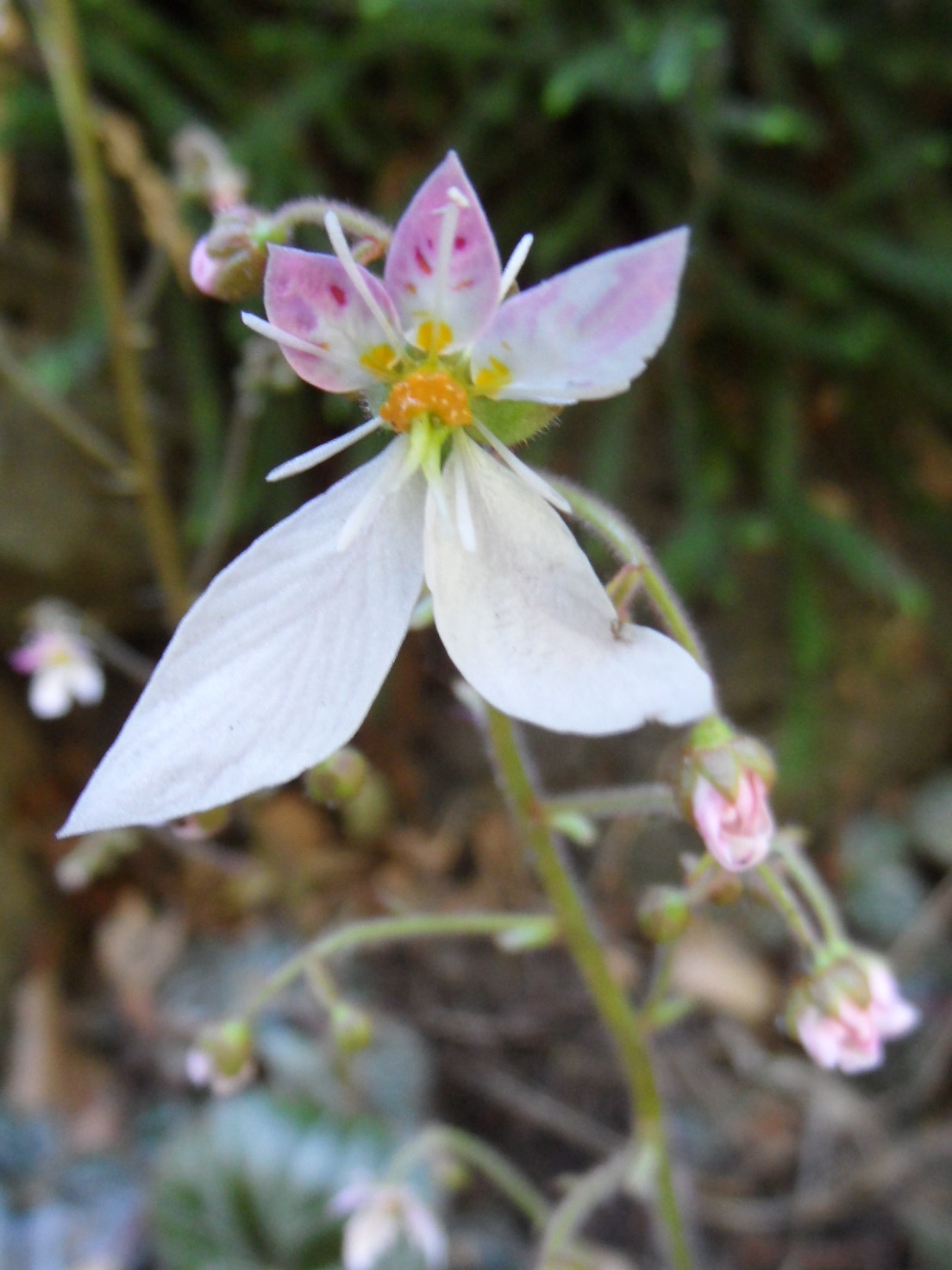
From the Latin saxum — rock, fragere — to break, referring to the one-time medicinal use of these plants as a cure for kidney and bladder stones.
Annual, biennial and perennial evergreen or deciduous herbs, sometimes tall and leafy but often prostrate, forming neat mats and cushions. Leaves simple, mostly alternate, entire, toothed or lobed and adapted to water stress; stipules absent. Flowers bisexual, mostly regular, solitary or in branched, mostly flat-topped clusters. Sepals (4)5, overlapping to form a shallow cup. Petals (4)5. Stamens 10, rarely 8. Ovary superior to almost inferior. Carpels 2, united at the base. Fruit a capsule.
A highly variable and popular genus in northern hemisphere horticulture with distinctive forms adapted to their wide-ranging natural habitats. Grown mostly in rock gardens but also occasionally in bog gardens and hanging baskets and as border plants. As a mostly cool-temperate, montane genus, it does not enjoy such popularity in Australia and most species are collectors' items although they are popular in cool-climate rock gardens. Hybrids (see Horn y et al. 1986) are generally more common in cultivation than species, both in the northern hemisphere and in Australia.
About 440 species, mostly from northern temperate and arctic regions, a few extending as far as Thailand in Asia and the Andes of S America.Mostly from rocky montane habitats.
Division, seed (monocarpic species) or tip cuttings.
Plants without fleshy rhizomes; often forming cushions; leaves entire or palmate.
Kohlein (1984), Gornall (1987), Webb &Gornall (1989). Hybrids: Hornôy et al. (1986). Popular: Harding (1992), McGregor (1995).
can be complicated as there are large numbers of species and numerous hybrids. Furthermore, the stock available in nurseries varies over time. For these reasons a key is not presented and the available plants are simply listed below.
The saxifrages are divided into 15 sections of which the 3 most useful to horticulture are: Section Kabschia and Engleria; Section Ligulatae, the silver and encrusting saxifrages; and Section Saxifraga.
SPECIES
Source: (2002). Saxifragaceae. In: . Horticultural Flora of South-eastern Australia. Volume 3. Flowering plants. Dicotyledons. Part 2. The identification of garden and cultivated plants. University of New South Wales Press.

Hybrids are much more common than species in cultivation. Descriptions are given as a guide for identification only: more detail is given in Horn? et al. (1986).
Flowers deep pink at the base. Raised by g.w. Gould in the 1930s.
Green cushions with rosettes of blunt leaves. Flowers lilac-pink, on stems 3-5 cm long. Raised r.v. Pritchard, c. 1925.
Flowers rose pink, on stems about 5 cm long.
(?s. cochlearis _ s. paniculata) Leaves blue-grey, reddish at the base. Flowers in dense, creamy spikes on stems to about 15 cm long.